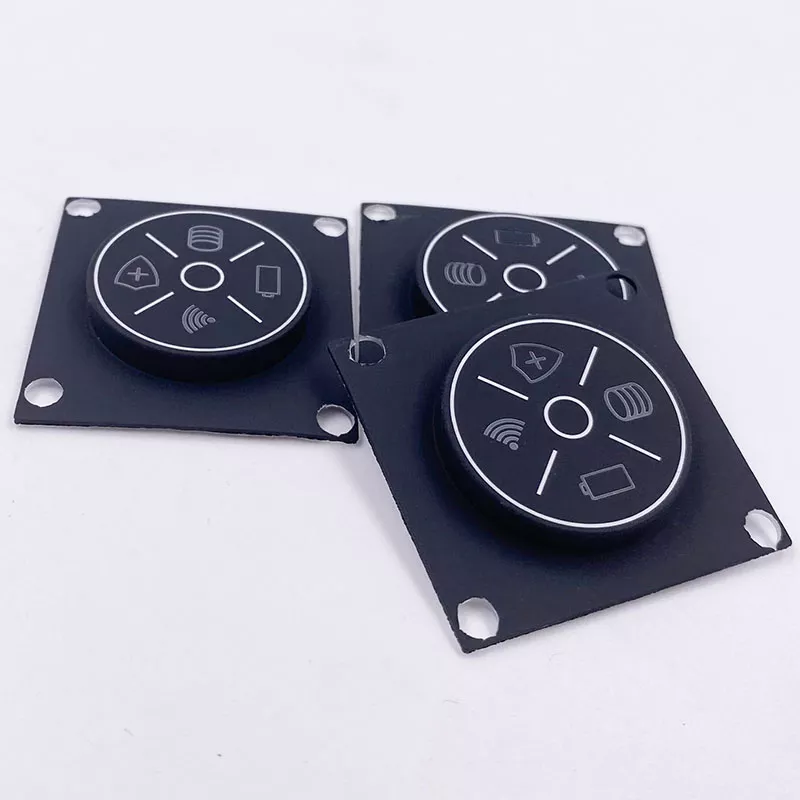Diverse Designs and Sizes of Conductive Printing Ink Button Keypad
Conductive rubber keypads feature specialized rubber adhesives that enable electrical conduction. When a key is pressed, contact with the PCB allows for electrical conductivity, which ceases upon release. Widely used in remote controllers and various switch applications, these keypads offer versatile functionality.
Essential Design Factors for Silicone Rubber Keypads:
- Key Travel Distance
- Button Padding
- Conductive Components: Carbon Pills, Graphite Pads, etc.
- Button Architecture
- Flexible Membrane
Guidelines for Silicone Keypad Design:
- Key Travel Distance
- Button Padding
- Conductive Components: Carbon Pills, Graphite Pads, etc.
- Button Architecture

- Flexible Membrane
- Additional Considerations: Surface Demands, Protective Covers, Material Selection, Transparency, Hardness, and Coating Options.
Conductive Ink Printing Overview:
Conductive inks are formulated to enhance electrical conductivity, typically employing graphite-based materials. They offer a cost-effective solution for creating conductive traces, utilizing an additive printing process that reduces material wastage. However, the high resistivity of graphite may restrict its suitability for certain PCB applications, and its lack of rigidity can exert undesirable forces on component connections, potentially compromising reliability. Consequently, while applicable in various contexts, these constraints confine its usage to specific scenarios.
Carbon Pills Overview:
Carbon pills, typically black in color, are composed of a silicone-based conductive compound infused with carbon particles, facilitating electrical conduction. Strategically integrated into key actuators, these pills establish vital connections with circuitry upon activation. During the molding phase, they are precisely embedded onto the underside of the keypad at designated switch points, akin to the meticulous process of insert molding used for electrical connector terminals.



